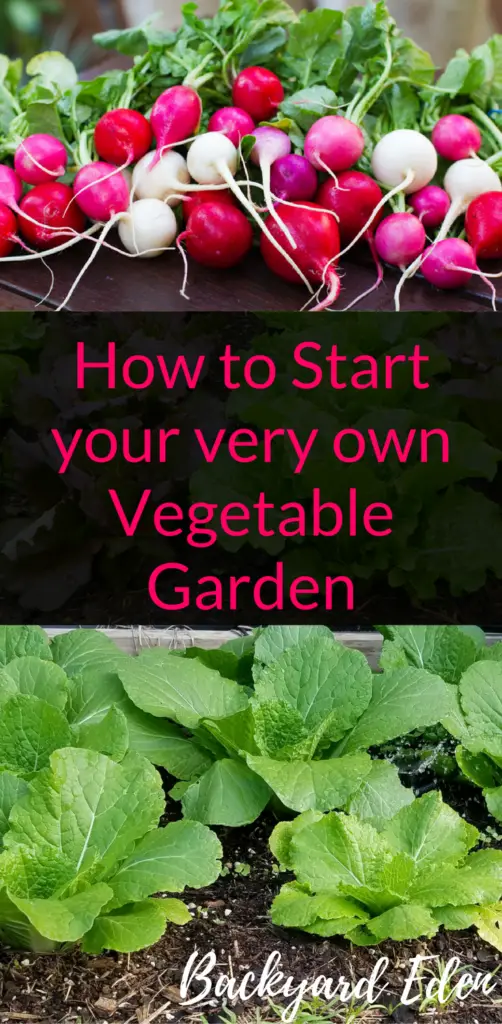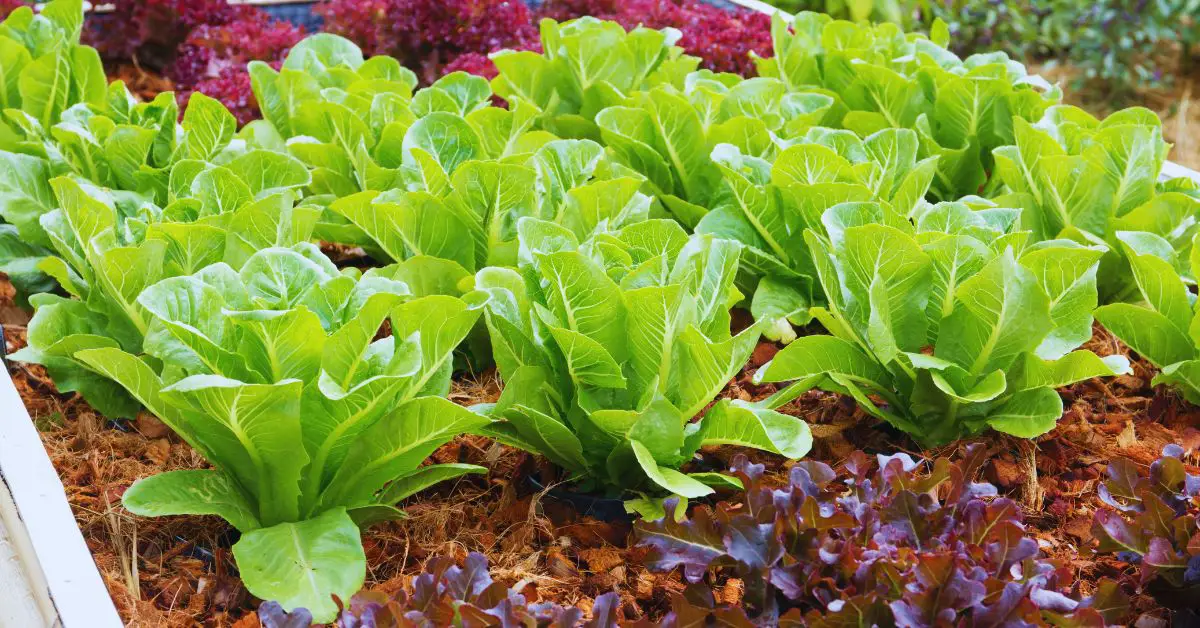 How to start your very own vegetable garden can be daunting to a beginner. We’ve been there! I’m going to guide you through the process and get you through this. So if you want to grow you own vegetable garden then you are in luck!
How to start your very own vegetable garden can be daunting to a beginner. We’ve been there! I’m going to guide you through the process and get you through this. So if you want to grow you own vegetable garden then you are in luck!
How to start your very own vegetable garden is easy if you know where to start.
Once you know the steps to starting your very own vegetable garden, you can do it too.
There are going to be decisions that you have to make and some work to do to succeed. We have some great tips for you!
Let’s get started.
The first thing you need to actually do is pick and clear out an area for your brand new garden.
There are things that you need to consider when selecting a location for your garden. Sunlight is crucial to the success of your garden.
Take a survey of your yard to find the out where the sun is at different times of the day. If there is shade, when does the sun first hit your garden?
Tip: Plants that you are growing for leaves can tolerate shade better than plants you are growing for their fruits. Ex. Swiss Chard will tolerate shade better than a Tomato plant.
Additional things to consider include: is the ground level, does water pool there when it rains, is it protected potentially pests such as deer and is there water accessible to that location.
Once you have considered these things, you can move on to step two.
What gardening method to use?
The second thing that you need to do is decide on what type of gardening you want to do. Do you want to grow directly in the ground, grow in raised beds or grow in containers?
Growing in the ground
Planting in the ground allows plants to access the nutrients that are deep down in the ground. If you have good soil, growing in the ground can be very rewarding.
Raised Beds
Raised beds offer you the perk of concentrating any added nutrients into a smaller area for your plants. The raised beds also provide better drainage when you receive a lot of rainfall. You never step into your raised bed which means that your soil doesn’t get compacted like traditional gardens.
Container Gardening
Container Gardening is another great option. I like to think of container gardening as an add-on to your main growing method. I use a combination of all three of these methods. Container gardening is a great option especially for people who do not have a lot of space.
If you have chosen to grow your garden in raised beds, check out our article “How to build a raised bed for under $30”
If you have chosen to grow your garden in containers, check out “What is container gardening”.
Prepare the ground.
Regardless of which method you chose to use, the next step is universal. The soil is the foundation to a healthy, happy vegetable garden.
The third thing you need to is actually start preparing the ground.
Planting in the ground
There is a huge movement right now about “no-till” gardening and I agree with that for the most part. I actually like to call it “low-till” because I believe that you should till minimally. I believe that you should till at the beginning of any new growing area. This loosens and aerates the soil to promote a healthy soil.
Raised Beds
Preparing the soil in any raised bed is the same. You want to start with a great soil that is nutrient dense with loads of organic matter as your foundation. Then add in some other ingredients to round out the soil profile. I like to add worm castings to add in some beneficial microbes and rock dust to add in the trace minerals that your soil may be lacking.
Container Gardening
Preparing the soil in containers is a little different because you need to consider drainage and water retention. You need to make the container mix so that it drains well but it should retain enough water as to not dry out too quickly. This can be somewhat tricky if you are new to gardening.
Tip: Here is a great container soil.
Fertilizer – Organic or Synthetic?
The fourth thing you need to make a decision on is fertilizer. Organic or Synthetic?
Here is the breakdown on the two. Organic is naturally made whereas synthetic is man-made. Both of them provide the same base nutrients (NPK) to the soil. The one main difference is the organic fertilizers feed the soil biology and synthetic does not.
Granular or Water Soluble?
The thing you need to remember about fertilizers in these two forms is that each of them serves their own purpose.
Granular fertilizers are “slow-release” meaning that the nutrients are not immediately available to the plants. The fertilizer has to be broken down over time in order for the plants to use them.
Water-soluble fertilizers are “fast-release” meaning that the nutrients are immediately available to the plants. The fertilizer when dissolved in water is already in a broken down state for the plants to use.
Tip: Why use just one? Use both! I like to put a little bit of granular fertilizer in the planting hole before putting my seedling in. I then water in well with a water-soluble fertilizer such as compost tea.
The hard work is done! You can start planning your garden by selecting which plants to grow and how much to grow. Once you have got your garden planned you can now start planting.
If you like this article, please share it on social media and with friends. For all the latest recipes, container gardening tips and growing guides subscribe to our newsletter in sidebar.
Also, check out our article on What is container gardening? or Best Herbs to Grow!
Be sure to Like us on Facebook and Follow us on Instagram and Twitter!





